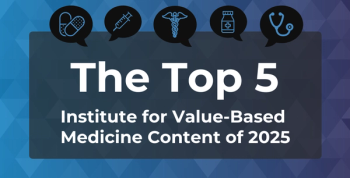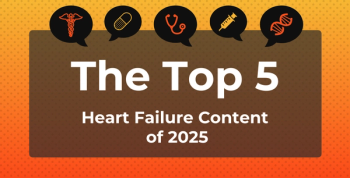
Brensocatib Becomes First Approved Therapy for Bronchiectasis, Expanding Treatment Options: James D. Chalmers, MBChB, PhD
James D. Chalmers, MBChB, PhD, explains that the ASPEN trial findings show that brensocatib reduces exacerbations, slows lung function decline at higher doses, and offers clinicians a long-awaited evidence-based treatment option.
Last week, the
In an interview with The American Journal of Managed Care®, James D. Chalmers, MBChB, PhD, professor of respiratory medicine at the University of Dundee in Scotland, discusses key findings from the ASPEN trial (
This transcript has been lightly edited; captions are auto-generated.
Transcript
Can you summarize the key findings of the ASPEN trial and how they supported the FDA's approval of brensocatib for the treatment of non-cystic fibrosis bronchiectasis?
The ASPEN trial was a phase 3, double-blind, placebo-controlled, randomized trial testing the hypothesis that brensocatib at either the 25 mg or the 10 mg dose would reduce the frequency of pulmonary exacerbations compared with placebo. ASPEN was by far the largest trial that's ever been conducted in bronchiectasis. A total of 1721 patients were randomized 1:1:1 to the 3 treatment arms. The primary outcome of the study was the annualized rate of adjudicated pulmonary exacerbations over 52 weeks, which was the treatment period.
The trial was positive, with an approximately 20% reduction in the frequency of exacerbations between the treatment groups and placebo. Both the 25 mg dose and the 10 mg dose reduced exacerbations compared with placebo. There were also positive results meeting the pre-specified threshold of statistical significance on the end points of time to first exacerbation and the proportion of patients who were free from exacerbations, and that's in both of the treatment groups.
Interestingly, the 25 mg dose, but not the 10 mg dose, slowed down the rate of decline in lung function, so that's FEV1: forced expiratory volume in 1 second. The magnitude of the difference compared with placebo is 38 mL for the 25 mg dose, so it flattened that decline that we see in people with bronchiectasis. That was supported also by an exploratory end point, which was the forced vital capacity, which was also impacted by the 25 mg dose, particularly.
The safety was also very reassuring, so the incidence of adverse events was very similar across all of the groups, with the exception of a small increase in hyperkeratosis, which is the thickening of the skin, that was seen in the brensocatib groups.
When put together, this trial, which is a landmark in bronchiectasis, showed a reduced frequency of exacerbations from time to first exacerbation, more patients were exacerbation-free at the end of the year, and, also, at the 25 mg dose, a slowing of the rate of lung function decline with an acceptable safety profile.
How would you describe the current standard of care for bronchiectasis? As the first approved treatment for this patient population, what does brensocatib add to the treatment landscape?
It's great that brensocatib has now been approved because up until this point, we've had no approved therapies for bronchiectasis by any regulatory authority internationally. Our current treatment paradigm for bronchiectasis, if you look at the [European Respiratory Society] 2017 guidelines, which are currently the only international guidelines, is a mixture of different things. It's airway clearance. For people who are frequently exacerbating, it's long-term antibiotics, like macrolides and inhaled antibiotics. It's mucoactive drugs, in some cases. But if we look across the world, the US, Europe, Japan, Australia, how we treat patients is very, very different, because, actually, the evidence for most of these treatments is quite limited, so doctors are doing the best that they can with a limited evidence base.
I think what brensocatib will offer is it's the first treatment that's approved. It's the first treatment that's got really robust evidence from phase 3 trials that's gone through that regulatory process. It's the first treatment that targets neutrophilic inflammation, which is the underlying driving force for a lot of exacerbations. I think it will add a very important additional tool on top of those other therapies that we currently use for people with bronchiectasis.
The last thing I will say is that disease progression is very important, and the slowing of the rate of decline in FEV1 suggests that brensocatib at the 25 mg dose may have a role in slowing the rate of decline of the disease. That also is important, I think. From my own clinical experience, if I've got patients who are rapidly declining in terms of lung function, brensocatib will give me a treatment that's proven to slow down that rate of decline, which for patients and for us will be very important.
Newsletter
Stay ahead of policy, cost, and value—subscribe to AJMC for expert insights at the intersection of clinical care and health economics.







































